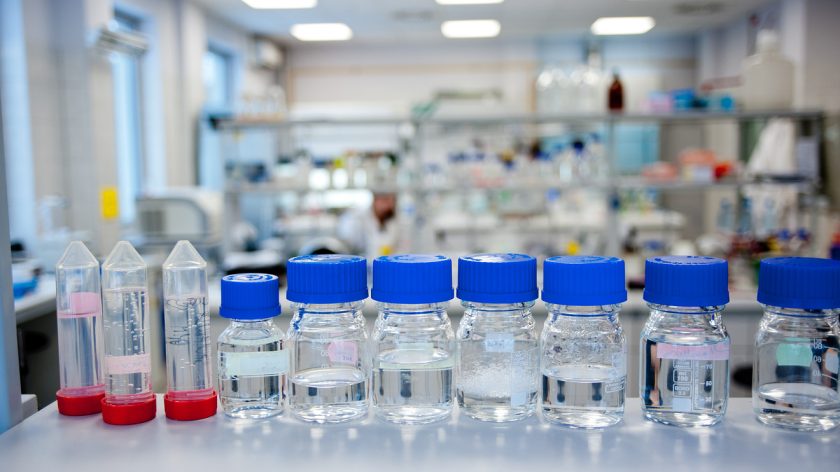Reagent bottles play a significant role in maintaining the purity and stability of laboratory substances. They protect the contents from contamination, evaporation, and exposure to light or air, which can compromise their quality. To ensure accurate experimentation and reliable results, it is essential to identify and use high-quality reagent bottles.
Importance of Quality Reagent Bottles
Using quality reagent bottles offers several advantages in a laboratory setting. Firstly, they provide a reliable and safe storage solution for various chemicals, reagents, and solutions. High-quality bottles are designed to withstand harsh chemicals and prevent leaks, spills, or breakage. This ensures the preservation of the contents and minimizes the risk of accidents or mishaps.
Secondly, quality Reagent Bottles contribute to accurate measurements and consistent results. They are manufactured with precise measurements and markings, allowing researchers to dispense the required amount of substances accurately. Moreover, these bottles are often made from materials that are resistant to chemical reactions, ensuring the integrity of the stored compounds.
Factors to Consider When Identifying Quality Reagent Bottles
When selecting reagent bottles for your laboratory, it is crucial to consider various factors to ensure their quality and suitability for the intended purpose. The following factors should be taken into account:
Material
The material of the reagent bottle plays a vital role in determining its quality. Glass and plastic are the most common materials used in manufacturing reagent bottles. Glass bottles offer superior chemical resistance, are impermeable to gases, and are easy to clean and sterilize. Plastic bottles, on the other hand, are lighter, less prone to breakage, and may be more cost-effective. However, it is essential to choose plastics that are compatible with the specific reagents to be stored.
Durability
Durability is a critical factor when it comes to reagent bottles. The bottles should be able to withstand the rigors of the laboratory environment, including handling, transportation, and storage. A durable reagent bottle should be resistant to impacts, scratches, and thermal shocks. It is advisable to opt for bottles made from sturdy materials that can withstand the demanding conditions of a laboratory.
Chemical Compatibility
Chemical compatibility is of utmost importance when selecting reagent bottles. Different chemicals have varying levels of reactivity with specific materials. It is crucial to ensure that the reagent bottle is made from a material that is resistant to the chemicals it will come into contact with. This prevents the bottle from reacting with the stored substance, maintaining its integrity and preventing contamination.
Design and Construction
The design and construction of reagent bottles contribute to their quality and functionality. A well-designed bottle will have features that facilitate easy and safe handling, pouring, and dispensing of the contents. Look for bottles with ergonomic shapes, sturdy bases, and properly designed necks and openings. Additionally, consider bottles with wide mouths for easy filling and cleaning.
Furthermore, the construction of the bottle should be robust and leak-proof. Check for seams, joints, or closures that are securely sealed to prevent any leakage or evaporation. A quality reagent bottle should be able to maintain a tight seal, protecting the contents from external contaminants and ensuring long-term storage stability.
Closure Mechanism
The closure mechanism of a reagent bottle is an essential aspect of its quality. It should provide an airtight and secure seal to prevent evaporation, leakage, or contamination. Common closure mechanisms include screw caps, snap caps, and stoppers. Ensure that the closure mechanism is easy to use, reliable, and resistant to chemical reactions with the stored substances.
Identifying Quality Reagent Bottles: Step-by-Step Guide
To help you in the process of identifying quality reagent bottles, here is a step-by-step guide:
Step 1: Check the Material
Determine whether a glass or plastic bottle is more suitable for your needs. Consider the chemical compatibility, durability, and specific requirements of the substances to be stored.
Step 2: Assess the Durability
Examine the bottle’s construction and material strength. Look for bottles that are resistant to impacts, scratches, and thermal shocks to ensure longevity.
Step 3: Evaluate Chemical Compatibility
Verify that the chosen bottle material is compatible with the specific reagents or chemicals that will be stored. Consult chemical compatibility charts or seek advice from suppliers if needed.
Step 4: Examine the Design and Construction
Consider the ergonomics, ease of handling, and pouring capabilities of the bottle. Ensure that the design and construction facilitate convenient usage and minimize the risk of accidents.
Step 5: Test the Closure Mechanism
Inspect the closure mechanism for tightness, ease of use, and chemical resistance. Confirm that it provides a secure seal to prevent leaks, evaporation, and contamination.
By following these steps, you can confidently identify quality reagent bottles that meet your laboratory’s requirements.
Benefits of Using Quality Reagent Bottles
Using quality reagent bottles in your laboratory offers numerous benefits:
- Protection: High-quality bottles safeguard the contents from contamination, evaporation, and exposure to external elements, ensuring their integrity and stability.
- Accurate Measurements: Precisely calibrated bottles allow for accurate dispensing and measurement of substances, leading to consistent and reliable experimental results.
- Safety: Quality bottles are designed to withstand the handling and storage conditions in a laboratory, minimizing the risk of accidents, spills, or breakage.
- Chemical Resistance: Reagent bottles made from appropriate materials prevent chemical reactions, preserving the purity and effectiveness of the stored substances.
- Longevity: Durable bottles have a longer lifespan, reducing the need for frequent replacements and providing cost savings over time.
Using quality reagent bottles is a wise investment for any laboratory, ensuring the safety, accuracy, and reliability of experimental procedures.
Conclusion
Choosing quality reagent bottles is essential for maintaining the integrity and reliability of laboratory substances. By considering factors such as material, durability, chemical compatibility, design, and closure mechanism, you can identify the most suitable bottles for your needs. Remember to prioritize safety, accuracy, and long-term durability when making your selection. Using high-quality reagent bottles will contribute to the success and efficiency of your laboratory experiments. Click here for more information about Lab Clearance .



![Top 10 Best Sofa Brands in India for [year]: Quality, Design, and Affordability Best Sofa Brands in India](https://top10collections.com/wp-content/uploads/2020/06/Best-Sofa-Brand-in-India.png)

